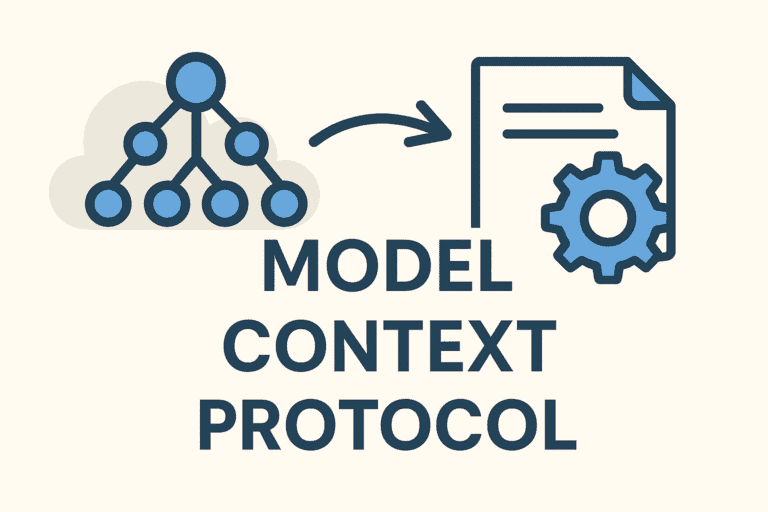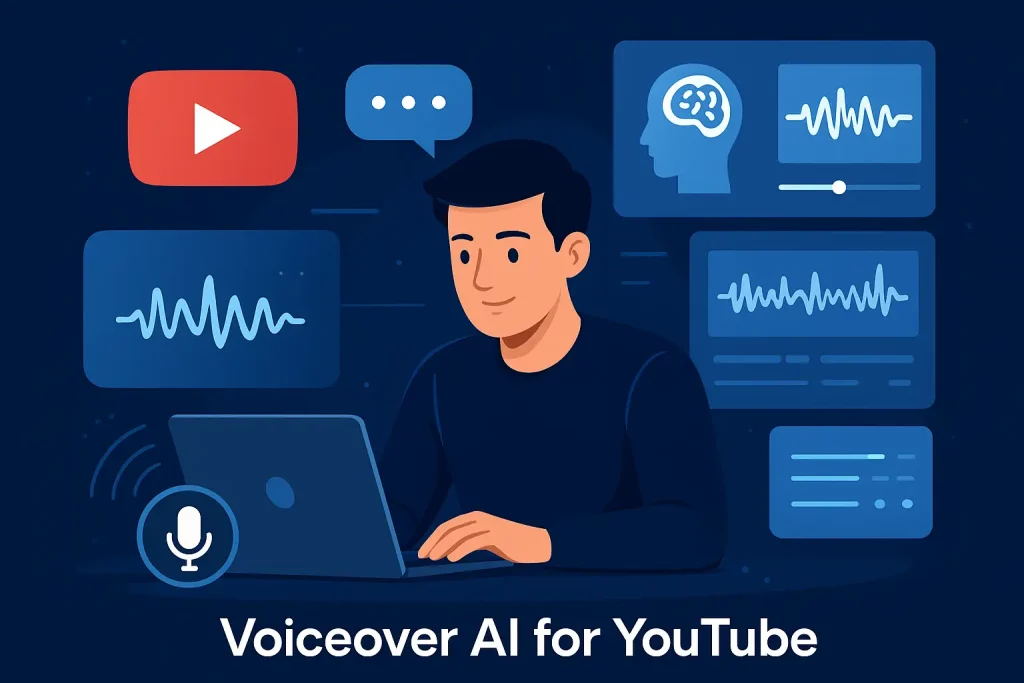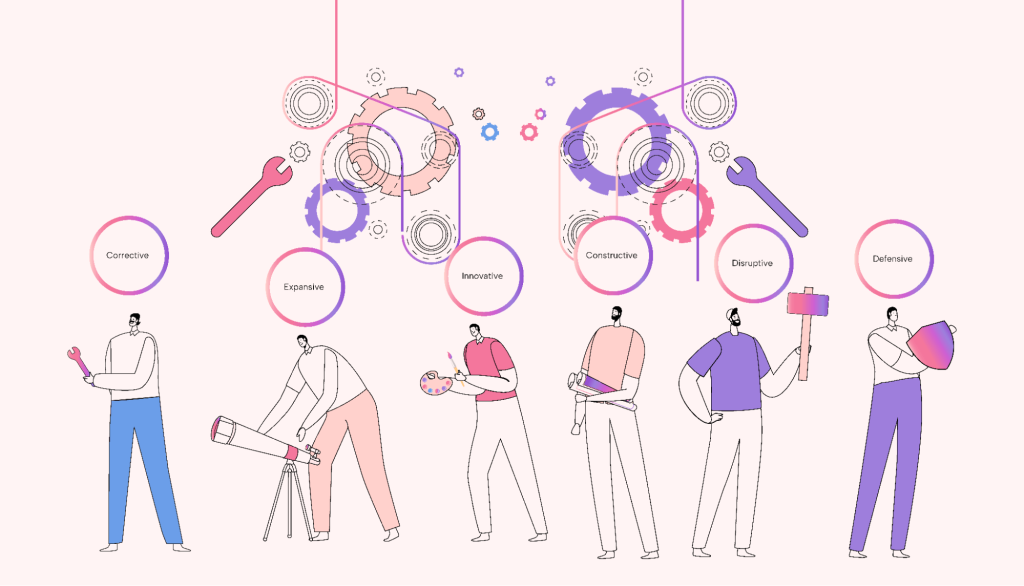In today’s fast-moving business environment, executing strategy is more difficult than ever. Leaders often talk about vision, ambition, and transformation — but operationalizing these aspirations tends to get bogged down in coordination problems, communication breakdowns, and the sheer complexity of connecting strategic goals to day-to-day work.
Statistics from multiple sources underscore the risk: a large share of transformation and strategic initiatives fail not because the strategy was flawed, but because execution gaps undermine progress. According to McKinsey, as many as 70% of transformation efforts fail due to poor execution—not bad strategy.
This is where applying artificial intelligence (AI) to strategic initiative execution becomes a game changer. Rather than relying on manual tracking and static dashboards, an AI-augmented approach can help organizations bridge the gap between strategy and action. It offers real-time visibility, forecasts risks before they materialize, aligns resources intelligently, and tightens the feedback loop between leadership and execution.
In this article, we’ll unpack:
What it means to drive execution with AI
The stakes and challenges of traditional methods
Key benefits unlocked by AI
Concrete AI use cases across the strategy lifecycle
A step-by-step blueprint for AI-enhanced execution
Measuring success: metrics & feedback loops
Typical pitfalls and how to avoid them
The evolving future: AI as strategic partner
Let’s dive in.
What Is AI-Driven Strategic Initiative Execution?

At its core, AI-driven strategic initiative execution means embedding AI models, algorithms, and automation into every phase of turning strategy into results — from goal formulation to monitoring outcomes. It’s not simply “project management with AI”; rather, AI becomes a co-pilot.
In practical terms:
AI helps craft, refine, and benchmark strategic goals using historical, market, and internal performance data
Execution is dynamically guided: priorities, tasks, resource allocation, and risk detection adjust in real time based on AI insights
Communication, alignment, and reporting become semi-automated: summaries, status updates, and stakeholder views are generated intelligently
The feedback loop tightens: live data feeds back into strategy, letting adjustments happen mid-flight
In a comparison:
| Traditional execution | AI-augmented execution |
|---|---|
| Manual reporting, lagging indicators | Real-time dashboards & automated reporting |
| Reactive risk management | Predictive analytics & early warnings |
| Decisions based on gut + static data | Scenario modeling + data-backed decisioning |
| Siloed tools and functions | Integrated intelligence across systems and teams |
By bringing AI into the fold, organizations can surface hidden risks or misalignment long before they derail progress. Leaders get tailored insights; execution teams stay in tighter sync with strategy; and decisions become faster and more grounded.
The High Stakes (and Hidden Frictions) of Strategy Execution
Before exploring how AI helps, it’s worth understanding why so many strategic initiatives struggle to succeed.
The cost of failure: time, morale, competitiveness
Failed strategic initiatives don’t just waste capital — they erode momentum, shake confidence, and slow a company’s ability to react to market changes. In complex enterprises, dozens or hundreds of interlocking projects must advance cohesively. If any break down, the overall vision is jeopardized.
Work sprawl: silent chaos undermining alignment
One critical, underappreciated culprit is work sprawl: the uncontrolled fragmentation of tasks, data, and decisions across disparate tools, platforms, chat channels, and documents. As work splinters:
Visibility across programs vanishes
Teams duplicate efforts unknowingly
Decisions get delayed waiting for context
Resources become misallocated or overburdened
When strategic alignment is buried under fragmented execution, the grandest plans collapse under their own complexity.
Misalignment between strategy and day-to-day work
Often teams work in silos, focused on their immediate deliverables without visibility into how their efforts map to overarching goals. Key strategic metrics (OKRs, KPIs) may be defined at the executive level, but they don’t always cascade coherently or remain visible as work progresses.
Slow decision cycles and missed inflection points
Static reporting models (e.g., quarterly reviews, slide decks, status meetings) introduce significant latency. Risks or deviations often emerge too late to correct. When decisions must wait on delayed data, momentum stalls.
Resource and budget inefficiencies
In the absence of unified insight, leadership sees only partial views of capacity, workload, and budget allocations. Some teams get overloaded while others are underutilized. Budgets get misdirected, deadlines slip, and morale declines.
In combination, these factors conspire to undermine even the most promising strategic plans.
Benefits of AI in Strategic Execution
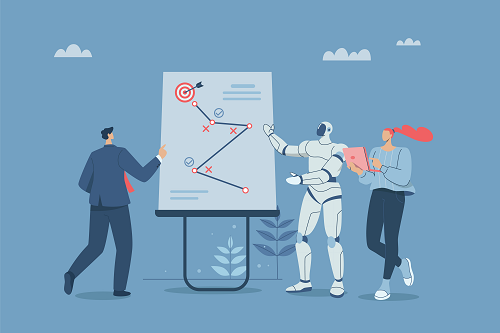
When implemented thoughtfully, AI can serve as a strategic multiplier — sustaining execution momentum, sharpening decision cycles, and surfacing insights that humans alone would miss. Here are the major advantages:
Executive summaries and intelligent reporting
AI can automatically digest massive volumes of execution data and distill them into tailored summaries. Whether for senior leadership, functional heads, or project stakeholders, these summaries can surface key metrics, emerging risks, and required decisions — saving hours of manual synthesis.
Data-driven scenario planning
Rather than commit blindly to one path, AI models can simulate multiple “what-if” scenarios: What happens if resources shift? If timelines stretch? If market conditions change? This helps leaders make risk-aware commitments.
Automated risk detection & mitigation
AI can analyze trends in workflow, dependencies, deliverables, and team performance to spot early warning signs of scope creep, timing delays, or misalignment. It can even recommend mitigation plans based on precedent or internal policies.
Faster, more confident decision-making
With predictive signals and live insights, leaders can act more decisively, reducing time lost to inertia or uncertainty.
Alignment of strategy to execution
AI can map OKRs or strategic objectives downward, continuously checking whether tasks align and surfacing drift. Misalignment can be flagged and corrected proactively.
Real-time visibility and ROI tracking
Instead of waiting for end-of-quarter reviews, leadership can see initiative health evolve in real time — tracking progress, resource utilization, and impact as the work unfolds.
These benefits collectively shift an organization from reaction to anticipation, from fragmented execution to coherence, and from delayed insight to ongoing strategic learning.
AI Use Cases Across the Strategic Lifecycle
Let’s look at how AI can concretely support each phase of executing strategic initiatives.
Forecasting outcomes and ROI before execution
Before launching a major initiative (e.g. new product, M&A, digital transformation), AI models can simulate possible paths using historical project data, internal metrics, and external market trends. These forecasts inform decisions such as resource allocation, timeline setting, and prioritization.
Importantly, these projections do not just remain static: they evolve as execution proceeds, helping teams pivot.
Automating reporting and stakeholder communications
One of the heaviest burdens in large-scale execution is generating consistent, timely status updates for different stakeholder groups. AI can automate that process:
Generate board-level summaries
Create department-specific KPI snapshots
Tailor status notes to each stakeholder’s focus
This not only saves time but increases consistency and reduces manual errors or friction.
Aligning OKRs/KPIs across functions
Large organizations often struggle to cascade goals coherently: teams may end up with inconsistent or conflicting targets. AI can map these objectives across business units, detect overlaps or gaps, and surface misalignment before it becomes problematic.
Optimizing resource allocation
Using data on team capacity, velocity, dependencies, workloads, and past performance, AI systems can recommend reallocations of talent, budget, or timing. This ensures scarce resources are deployed where they make the most strategic impact.
Generating real-time executive dashboards
Instead of static charts, AI-driven dashboards pull live data from multiple systems, contextualize them, highlight anomalies, and present actionable insights (not just status, but “why” and “what next”).
Retrospectives, lessons learned, and iteration
Execution doesn’t end when a project closes. AI can analyze performance against original objectives, assess variances across units, and generate retrospective reports identifying root causes and lessons. From there, future strategies can be refined — closing the feedback loop.
Step-by-Step: Executing Strategic Initiatives with AI
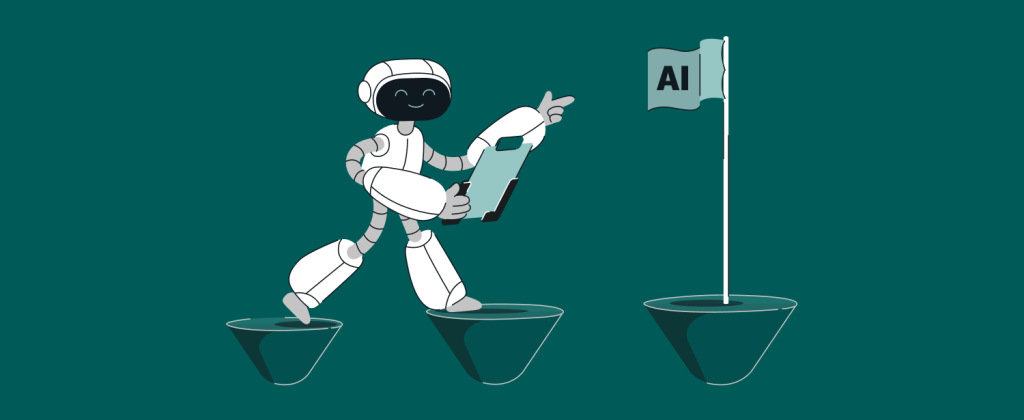
Here’s a structured approach to roll out AI-augmented strategy execution, suitable for organizations wanting to upgrade existing processes.
Step 1: Define strategic objectives & success metrics
Begin with clarity. Before any action, make sure the initiative has:
A defined scope
A measurable outcome (OKRs, KPIs)
Benchmark context
AI can aid this step by:
Analyzing historical performance and market data to suggest realistic targets
Using natural language processing (NLP) to validate goal clarity or detect ambiguity
Ensuring traceability between high-level objectives and downstream activities
Step 2: Breakdown initiatives into workstreams
Ambitious strategy often fails to materialize because goals stay too macro. Breaking them into structured workstreams, epics, tasks, dependencies, accountability, and timelines is crucial.
AI can accelerate this:
Generate scaffolding: phases, epics, tasks
Map tasks to team functions and timelines
Infer dependencies and priority ordering
Thus, planning becomes faster and less error-prone.
Step 3: Align stakeholders and units
Strategic initiatives often demand heavy cross-functional collaboration: marketing, product, engineering, HR, finance, operations, etc.
AI helps here by:
Summarizing status per function, highlighting gaps or slippage
Detecting misalignment between task execution and strategic intent
Surfacing communication gaps or inconsistencies
Additionally, communication agents or triggers can post updates, manage standups, or answer queries automatically (within defined guardrails).
Step 4: Identify risks and bottlenecks early
Rather than waiting until deliverables are overdue, AI can predict where slippages may occur:
Recommend mitigations using past patterns
Forecast delays based on team velocity, update cadence, and dependencies
Spot recurring bottlenecks or ownership gaps
These early signals enable preemptive adjustments.
Step 5: Track progress and surface insights
Execution should be more than task tracking — leadership needs business signals:
AI dashboards tailor status updates contextually
Suggest timeline shifts or resource changes guided by live data
Correlate historical patterns to detect hidden relationships
The aim: turn raw execution data into strategic intelligence.
Step 6: Report outcomes and iterate
Post-initiative, AI helps extract lessons:
Compare actual results vs. planned outcomes
Measure ROI across departments, regions, channels
Generate retrospective narratives: what worked, what didn’t, and why
Suggest adjustments for future strategic cycles
Iteration is now built into the system, not tacked on after execution.
Measuring Strategic Initiative Success with AI
Measuring execution is more than ticking boxes — it’s about learning while doing. AI helps by combining leading and lagging indicators in real time.
Leading indicators vs. lagging indicators
Leading indicators are early signals: pacing, engagement rates, handoff delays, rising escalation frequency, dependency health.
Lagging indicators are outcome metrics: revenue growth, cost reduction, customer metrics, ROI.
Traditionally, teams wait for lagging metrics — too late to change course. AI allows you to monitor and interpret both in tandem, enabling course correction while there’s still time.
Dynamic dashboards with context
AI-enhanced dashboards don’t just show numbers — they interpret them:
Highlight metrics deviating from expected ranges
Surface root causes or suspect dependencies
Offer decision-relevant next steps
Thus, dashboards become decision engines, not passive displays.
Predictive analytics: looking ahead, not just looking back
Rather than just tracking performance historically, AI models can forecast future trajectory:
Are predicted ROI curves likely to hit targets?
Which functions or deliverables are likely to lag?
Where should we reallocate resources mid-execution?
These insights let leadership pivot proactively.
Pitfalls & Risks: When AI Execution Fails — And How to Avoid It
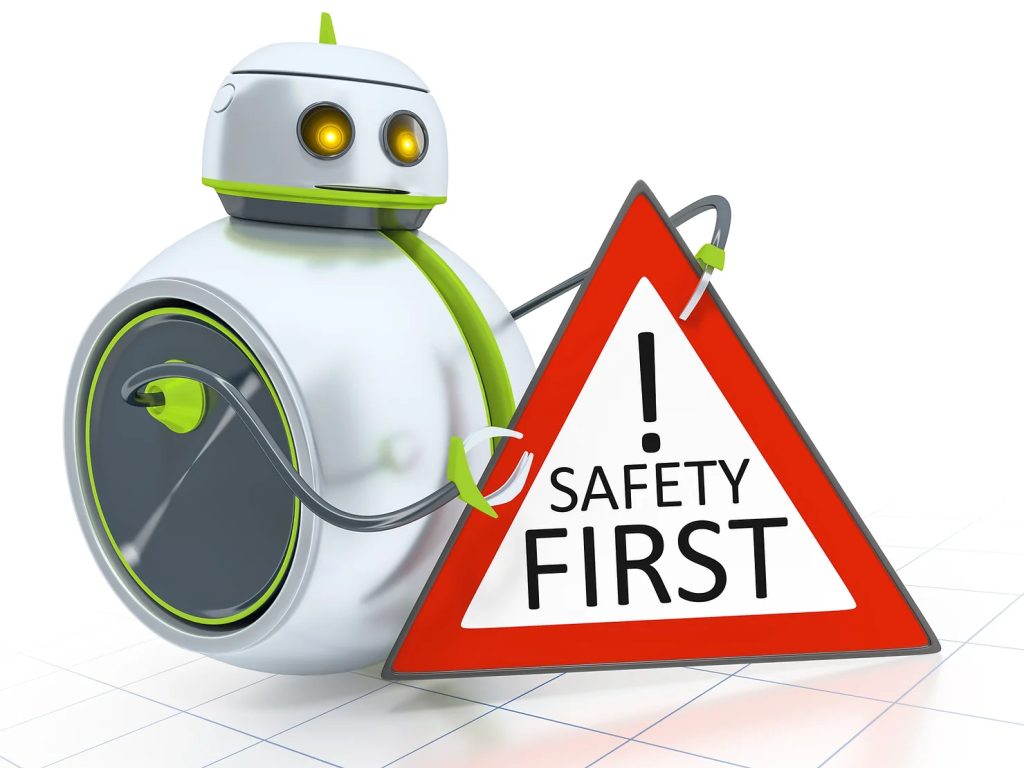
While promising, AI-powered execution is not a silver bullet. Missteps can lead to overconfidence, alienation, or flawed outcomes. Here are key pitfalls and recommended safeguards:
Over-reliance on AI at the expense of human judgment
AI is powerful in pattern detection, trend analysis, and probability estimation — but it lacks contextual nuance, cultural insight, or moral judgment. If teams treat AI outputs as definitive and skip critical human review, they risk misalignment or unintended consequences.
Mitigation: Always embed review gates. Let humans interpret AI proposals in light of business strategy, constraints, and qualitative factors.
Treating probabilistic forecasts as certainty
AI predictions are probabilistic by nature — not guarantees. Relying on them too rigidly can lead to misallocation, budget lock-ins, or strategic rigidity.
Mitigation: Use AI forecasts as directional guidance. Always maintain scenario flexibility and question assumptions. Avoid overcommitment to one path.
Ignoring the human side of adoption
Even the smartest AI solution fails if people don’t accept it. Resistance stems from lack of clarity about how the system operates, erosion of trust, or perceived loss of autonomy.
Mitigation: Involve teams early. Be transparent about AI logic and how decisions are made. Educate, iterate, solicit feedback. Automate incrementally rather than all at once.
Automation without accountability
Automation can reduce friction, but if roles and ownership are unclear, it may diffuse responsibility. Teams might assume AI “will handle it,” leading to gaps.
Mitigation: Define clear responsibility boundaries. Ensure that AI-generated recommendations still require human sign-off in sensitive areas. Establish escalation pathways.
Underestimating data quality, bias, or governance challenges
AI depends heavily on clean, reliable data. If input data is biased, outdated, inconsistent, or siloed, insights will be flawed.
Mitigation: Invest in data governance, data architecture, and validation. Monitor for model bias. Periodically audit AI recommendations for drift.
The Future: Human + AI as Partners in Execution
As organizations mature in AI-driven strategy, a deeper shift is emerging: AI is no longer just a tool, but a partner in strategic execution. Several evolving trends illustrate this transformation:
Agentic AI & trust
Agentic (autonomous) AI — agents that can make decisions or trigger actions independently — are on the rise. But with autonomy comes the need for trust and explainability. Many organizations now treat AI as a co-pilot, not a replacement, emphasizing human oversight.
Some research suggests agentic AI could unlock hundreds of billions of dollars in economic value by 2028. Yet trust in fully autonomous systems has dropped due to concerns over ethics and accountability. The future lies in hybrid human-agent partnerships.
Reconfigured accountability & team roles
As AI assumes greater execution responsibilities, roles and workflows shift. Many organizations expect to restructure responsibilities, workflows, and decision rights to align with AI-enabled execution.
Accountability becomes more explicit, and humans will supervise, interpret, and augment AI rather than manually control every detail.
From reactive execution to proactive innovation
With AI surfacing insights early and enabling scenario simulation, the focus shifts from “catching up” to “staying ahead.” Execution becomes anticipatory and adaptive rather than reactive. Over time, teams spend less on administrative overhead and more on high-value, creative work.
In high-maturity environments, leaders expect:
Increased engagement in strategic thinking
Uplift in creative outputs
Better agility in shifting conditions
AI becomes the enabler, not the hobbler, of human creativity.
Progressive automation of planning + decisioning
Analysts predict that as many as 50% of strategic planning and execution tasks could be partially or fully automated over time. But automation does not mean removing humans — it means reassigning humans to higher-order oversight and design work.
Conclusion
Bridging the divide between strategic ambition and tactical delivery is one of the perennial challenges of leadership. Execution failures derail transformation, erode trust, and cost companies time and opportunity.
AI-driven strategic initiative execution offers a compelling alternative. When applied carefully, it provides real-time insight, scenario forecasting, risk detection, alignment enforcement, and feedback loops—turning strategy into living, adaptive execution.
But AI is a co-pilot, not a replacement. Success requires:
Thoughtful governance and human oversight
Data cleanliness, transparency, and quality
Change management and adoption efforts
Iterative deployment and feedback
In the coming era, the most effective organizations won’t just plan well — they’ll execute intelligently, continuously, and collaboratively, with AI as a trusted partner.
Read More: How to Implement Model Context Protocol in Your Workflow


